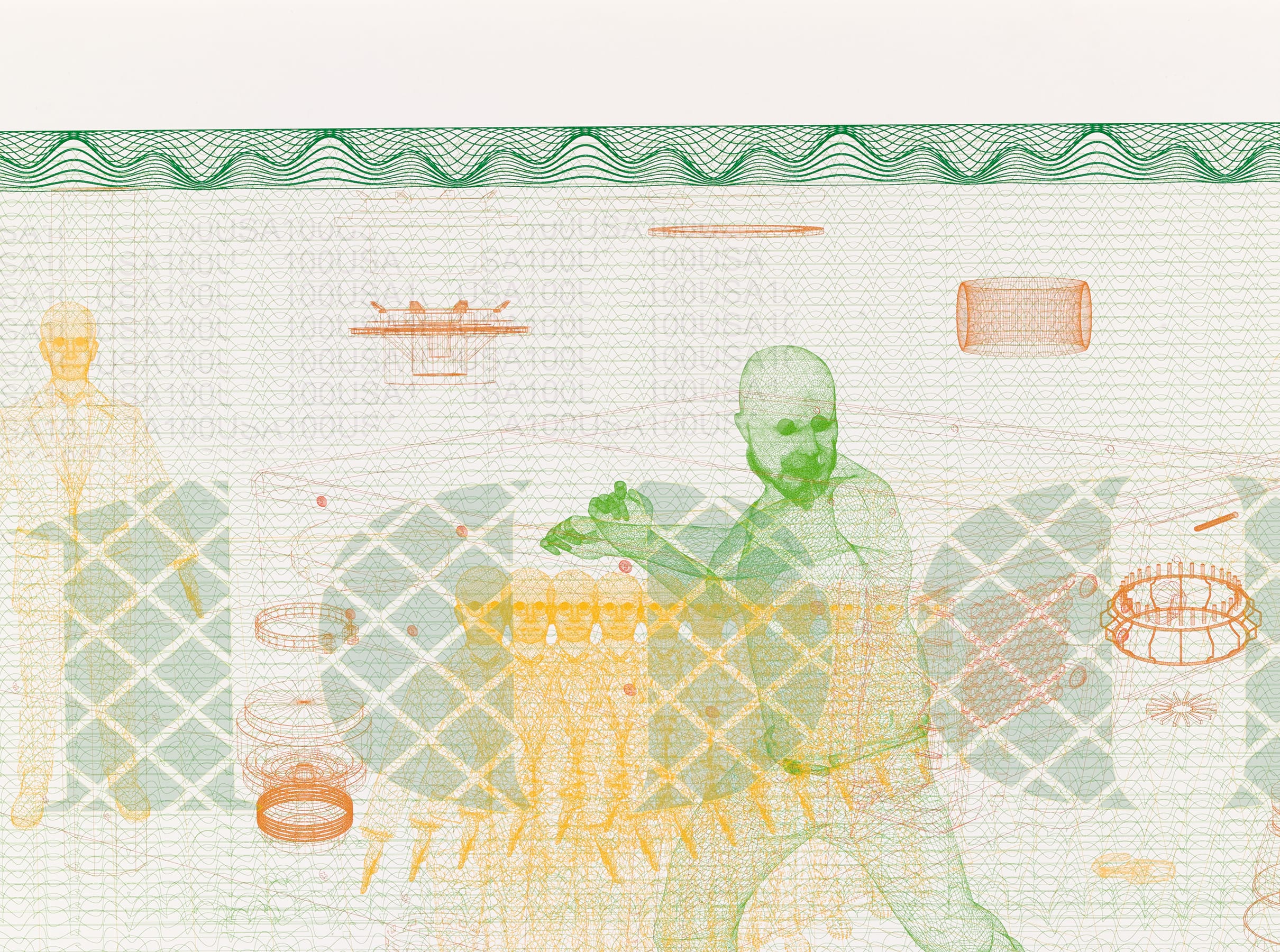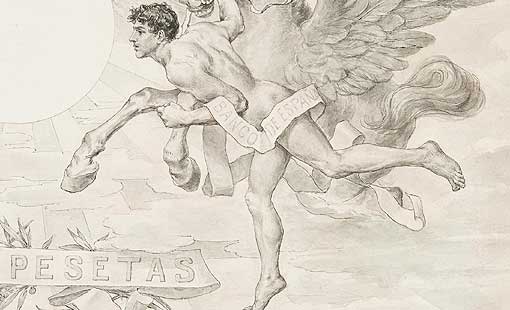
Highlights section updated with works by José Villegas y Cordero, Xavier Ribas and Victoria Civera
The Highlights section of our website is regularly updated with works from our extensive collection of over 4500 works covering different periods, styles and formats. The painting ++ Enlace Roto ++
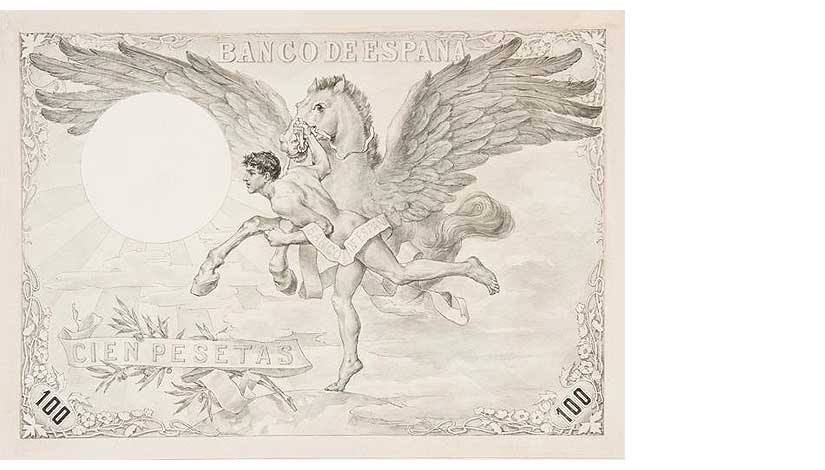 José Villegas y Cordero: Hippogryph in flight (c. 1903)
José Villegas y Cordero: Hippogryph in flight (c. 1903)
Villegas y Cordero, was a significant figure in late 19th and early 20th century Spanish art. Indeed, he was Director of the Museo del Prado (Prado Museum) from 1901 to 1918. His work featured here is Hippogryph in Flight (c. 1903), one of his design sketches for banknotes commissioned by the Banco de España. Carlos González Navarro writes that its pared-back, symbolist style alludes to "concepts linked to fiat value" and/or "the common wealth of the country".
As an innovative initiative under the general plan to produce paper money for Spain, José Villegas y Cordero was commissioned to design banknotes. Never before had a contemporary artist been asked to create an original design for a banknote: up to that that time notes had usually featured reproductions of famous art works or standardised decorative motifs. The initiative was actually widely reported in the press. He produced a number of designs on themes related to his well-known series 'Decalogue', but limitations in production techniques meant that many of them never went into circulation, or did so only after adaptation by engraver Ricardo Maura. The Banco de España holds three sketches from the series: Trade, Protector of the Fine Arts, The Artist and His Inspiration and the picture of the hippogryph in flight mentioned above. The Collection also includes five other works by the same artist, among them a portrait of King Alfonso XIII of Spain as a young man (commissioned from the bank in 1902) and another of Francisco Belda y Pérez de Nueros, 3rd Marquis of Cabra, a highly important figure in the history of the collection.
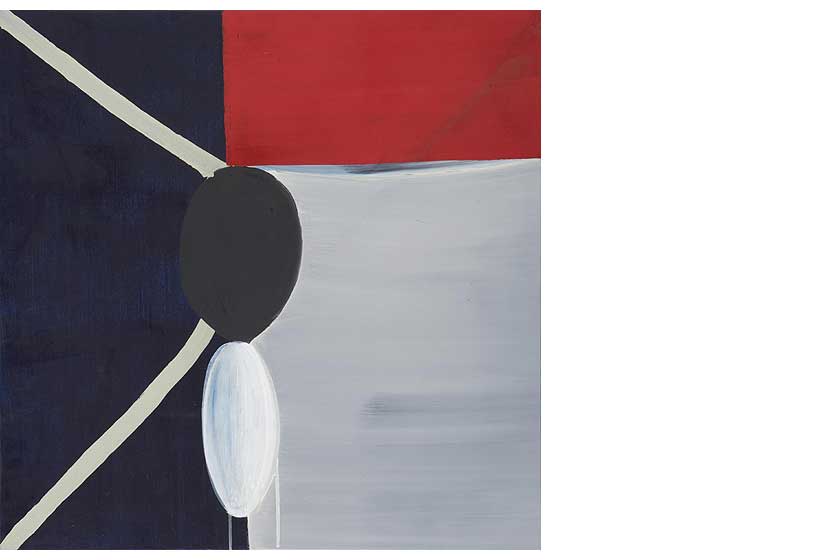 Victoria Civera: Tel Tech (1992)
Victoria Civera: Tel Tech (1992)
The Highlights update also includes Tel Tech by Valencia-born Victoria Civera, who has made feminist thinking and the representation of the feminine a core element of her work. Since the 1990s she has worked mainly in paint. Tel Tech is a small oil painting that blends organic and geometrical themes to produce an apparently strict, linear abstract work imbued with subtle gestures that somehow evoke living shapes.
This is one of four works by her in the Banco de España Collection. They all date from 1991 or 1992 and reveal her increasing interest in intimate ambiences. Carlos Martín writes that in later works she explores feminine themes and the way in which they are expressed culturally. Civera won the Gold Medal for Merit in Fine Arts in 2014. These works dates from a period of her career in which her output was becoming more objectual, which in turn led her to extend her field of action to sculpture and installations. Her Untitled (1992), which is also part of the Collection, is a clear example of that tendency. She also harks back in it to the circular compositions that abounded in her works of the early 1980s.
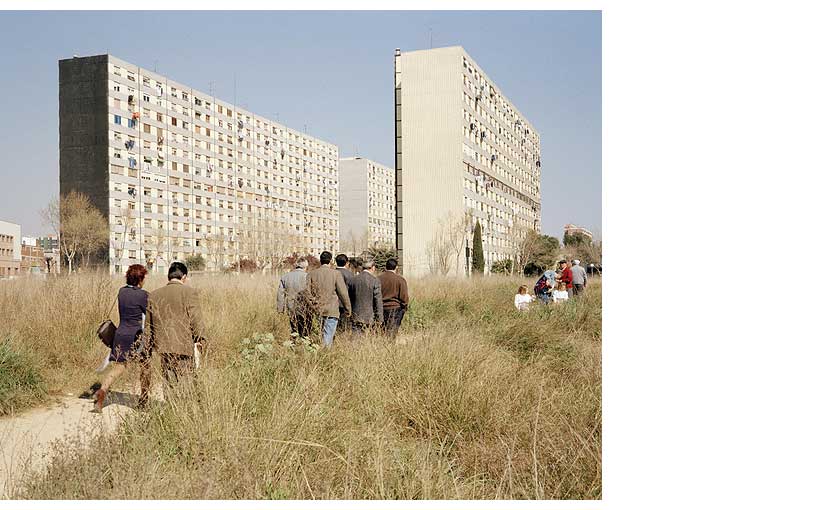 Xavier Ribas: Untitled (Bellvitge) (1994-1997)
Xavier Ribas: Untitled (Bellvitge) (1994-1997)
The third work features in our Highlights update is Untitled (Bellvitge), a photo in which Xavier Ribas depicts a space somewhere between the urban and the rural on the outskirts of the metropolitan area of Barcelona. It is part of his series Sundays, produced between 1994 and 1997. The Banco de España Collection also holds another image from the same series: Untitled (Flowers). Álvaro de los Ángeles writes that in this series Ribas reflects on a core issue in contemporary art: what Marc Augé calls "non-places", i.e., "transitional, interstitial spaces between the productive and the recreational, between the built and the yet-to-be-built", which have emerged in recent years in our cities and which are key to understanding the experience of contemporary life.
Xabier Ribas is one of those artists who combine anthropological research with visual mises-en-scène. In this series he looks at Barcelona in the post-Olympic Games period, when the party finery in which the city had been decked out was beginning to come apart at the seams. But he also looks at those small-scale rituals and acts of resistance invented by the population to reclaim public spaces and feel (again) that they were part of a community. There is a strong autobiographical component to Ribas’ work: as a young man he frequented the areas depicted. There is also an air of flânerie, of wandering randomly through the city streets to see what turns up, rebelling against the productivist/ consumerist logic that conditions and structures (most of) our day-to-day movements.
